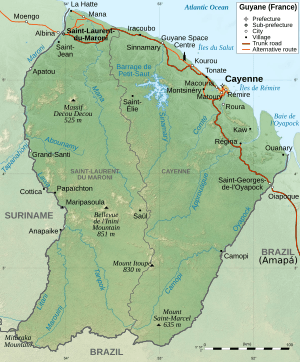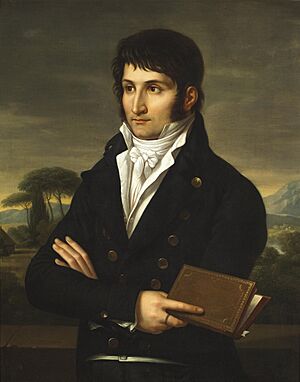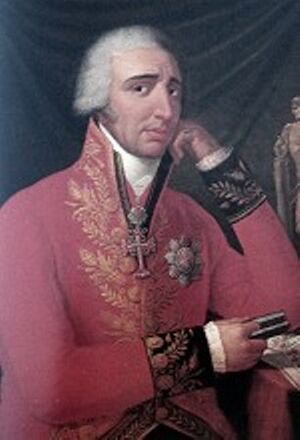Treaty of Madrid (1801) facts for kids
| Treaty of Peace between France and Portugal. | |
|---|---|

French Guiana; the Treaty extended its borders south
|
|
| Context | Portugal agrees territorial adjustments in South America, closes its ports to British shipping and pays France 20 million francs. |
| Signed | 29 September 1801 |
| Location | Madrid, Spain |
| Negotiators |
|
| Parties | |
The 1801 Treaty of Madrid was an agreement signed on September 29, 1801. It was made between Portugal and France. In this treaty, Portugal gave up some land to France in Northern Brazil. Portugal also agreed to close its ports to British ships. Finally, Portugal had to pay France a large sum of money, 20 million francs.
Why the Treaty Was Signed
In 1793, Portugal and Spain joined a group of countries called the First Coalition. They were fighting against the French Republic. But Spain left this group in 1795 after losing several battles.
Spain then became friends with France in 1796. They signed the Second Treaty of San Ildefonso. After this, Spain declared war on Britain. During another war, called the War of the Second Coalition (1798–1802), Spain invaded Portugal. This happened on May 20, 1801, in a conflict known as the War of the Oranges. France pushed Spain to do this. France wanted to stop Britain from using Portugal's important ports.
Portugal and Spain signed the Treaty of Badajoz on June 6, 1801. On the same day, Portugal also made a separate agreement with France. This second Treaty of Badajoz gave France a lot of land in South America. The border between French Guiana and Brazil was usually the Oyapock River. This border was set in 1713. But the new treaty wanted to move it south to the Araguari or Amapá River. This would give France large parts of Northern Brazil. Portugal also agreed to close its ports to British ships. It also had to pay 2 million francs and let French wool goods be imported.
However, Napoleon, who was a powerful leader in France, refused to approve this treaty. He said that his Foreign Minister, Talleyrand, and his younger brother, Lucien Bonaparte, had been bribed by Portugal.
What the Treaty Said
At that time, most European settlements in South America were near the coast. So, having access to rivers was very important. Portuguese explorers, called Bandeirantes, had used these rivers to travel inland. They found gold and diamonds there.
The Treaty of Madrid moved the border of French Guiana even further south. It went to the Carapanatuba River, which flows into the Amazon River. This gave France the right to use the Amazon River's mouth for shipping. This greatly increased the possible wealth of French Guiana.
Portugal also promised again to close its ports to British ships. This was something it had already agreed to with Spain in the Treaty of Badajoz. Portugal also had to allow French wool goods to be imported. Wool was Portugal's main import from Britain. There was also a secret part of the treaty. It increased the money Portugal had to pay France. It went from 2 million to 20 million francs.
What Happened Next
Even before the Treaty of Madrid was signed, Britain and France started talking about peace. They signed the Treaty of Amiens in March 1802. This treaty ended the War of the Second Coalition. The Treaty of Amiens allowed British ships to use Portuguese ports again. It also moved the border with French Guiana back to the Araguari River, as agreed before. The war between Britain and Spain (1796–1808) also stopped for a while. There was a break until Britain and France started fighting again in 1803.
Spain declared war on Britain in December 1804. Portugal stayed neutral for a few years. But then Spain and France signed the 1807 Treaty of Fontainebleau. This treaty planned to divide Portugal between them. The Treaties of Badajoz and Madrid had rules saying they would be canceled if any part of them was broken. Portugal said that the Treaty of Fontainebleau broke those rules.
After France invaded Portugal in 1807, the Portuguese Royal Family moved to Brazil. They stayed there until 1821. Portuguese forces then took over French Guiana from 1809 to 1817. It's interesting to note that by 1825, most Spanish and Portuguese colonies in South America had become independent. But French Guiana is still part of France today.
See also
 In Spanish: Tratado de Madrid (1801) para niños
In Spanish: Tratado de Madrid (1801) para niños
- List of treaties
- War of the Oranges




